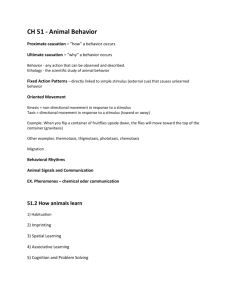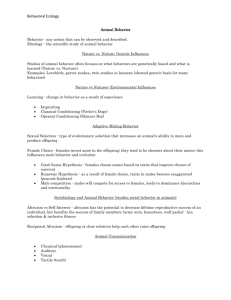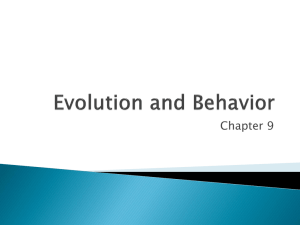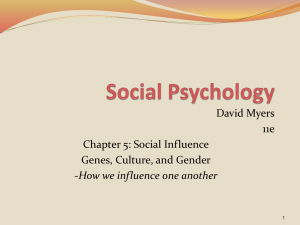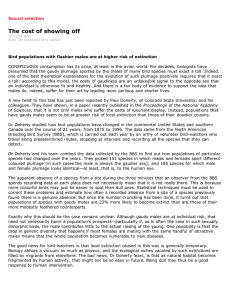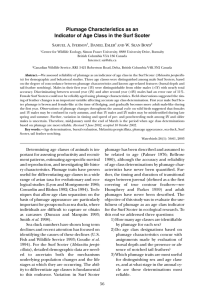Animal Behavior
advertisement
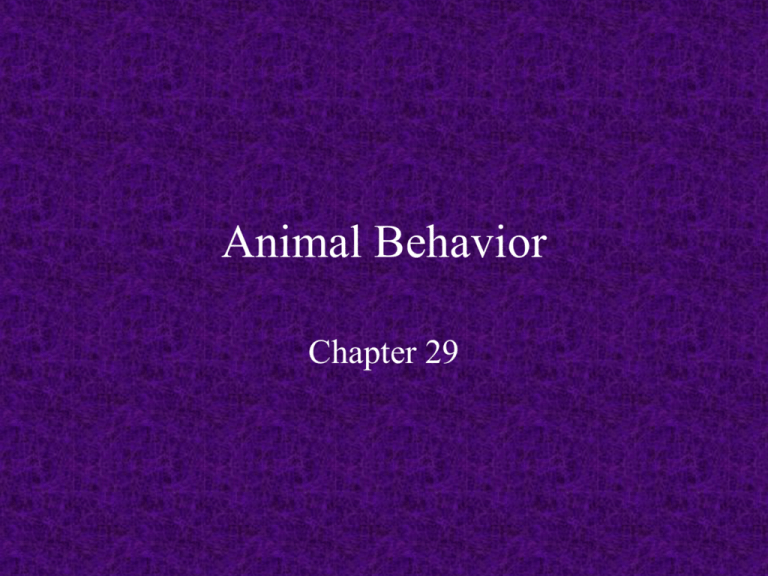
Animal Behavior Chapter 29 What is Behavior?? • Behavior – observable and coordinated responses to environmental stimuli • Genetic or Learned or Both??? – “Nature or Nurture” – How do you explain the behavior differences with twins? Learned Behavior • Learning = a durable change in behavior brought about by experience. – • Occurs when a behavior changes with practice. Two forms of learning 1. Operant Conditioning 2. Imprinting Operant Conditioning • Def: the gradual strengthening of stimulusresponse connections. • Teach a dog tricks by giving a treat or praise Imprinting • Def: a learning process in early life whereby species specific patterns of behavior are established • Best known with birds being imprinted on the first thing they see when they hatch mother. – Purposes: • Keeps babies near mother • Also causes males to court same species later in life. Adaptive Learning • Behavior can evolve! – Changes because of environment • Abiotic • Biotic: usually other organism (diff. sex) • Sexual Selection… • Sexual Selection: changes in females and males, often due to differential reproductive success of individuals, caused by mate choice and competition for mates. • Types: – Female choice – Male competition Female Choice • Courtship Displays: rituals that serve to prepare the sexes for mating. – Male usually displays, – Female chooses the male with best display • Good Genes Hypothesis • Run-away Hypothesis Female Choice • Good Genes Hypothesis – Females benefit by having a male with good genes • Able to pass on those genes to the offspring • Enabling the offspring to live longer. Female Choice • Run-away Hypothesis – Females choose mates on the basis of traits that make them attractive to females. – “Run-away” means that this causes the males to have exaggerated traits to out compete other males. – Problem: could cost male his life. Female Choice Ex… Female Choice Ex… • Bowerbird – Female chooses male by his collection of objects, not plumage. Male Competition • Males competing with other males to mate with a female. Communicative Behavior 1. 2. 3. 4. Chemical Communication Auditory Communication Visual Communication Tactile Communication Chemical Communication • • • • • Works with distance, night, and day. With Pheromone – within same species Insects – captured by antennae Mammals – smell Yes, humans have pheromones Auditory Communication • Sound • Faster than chemical, travels farther, effective both day and night. Visual Communication • Sight • Usually used by organisms that are active during the day. • Used between males as threat postures, etc. • Bird plumage for courtship • Bright mouths on chicks – ‘feed me’ Tactile Communication • Touch • Ex: – Primates groom one another – Chicks peck the mothers beak – Honeybees communicate (‘waggle dance’) Group Living • Advantages: – Avoid predators – Help rearing offspring – Gathering food • Disadvantages: – Hierarchies – Illness – Share food Altruism • Behavior that involves a reduction in direct fitness that may be compensated by an increase in indirect fitness. • Sentinel - the individual that watches for danger and warns the group. Altruism Ex’s: • Insects – Bees, Ants, Termites, etc. Altruism Ex’s: • Birds – Weavers, Crows, Canada Goose, etc. Altruism Ex’s: • Mammals: – Meerkat, Naked-Mole rat, Primates, etc.

